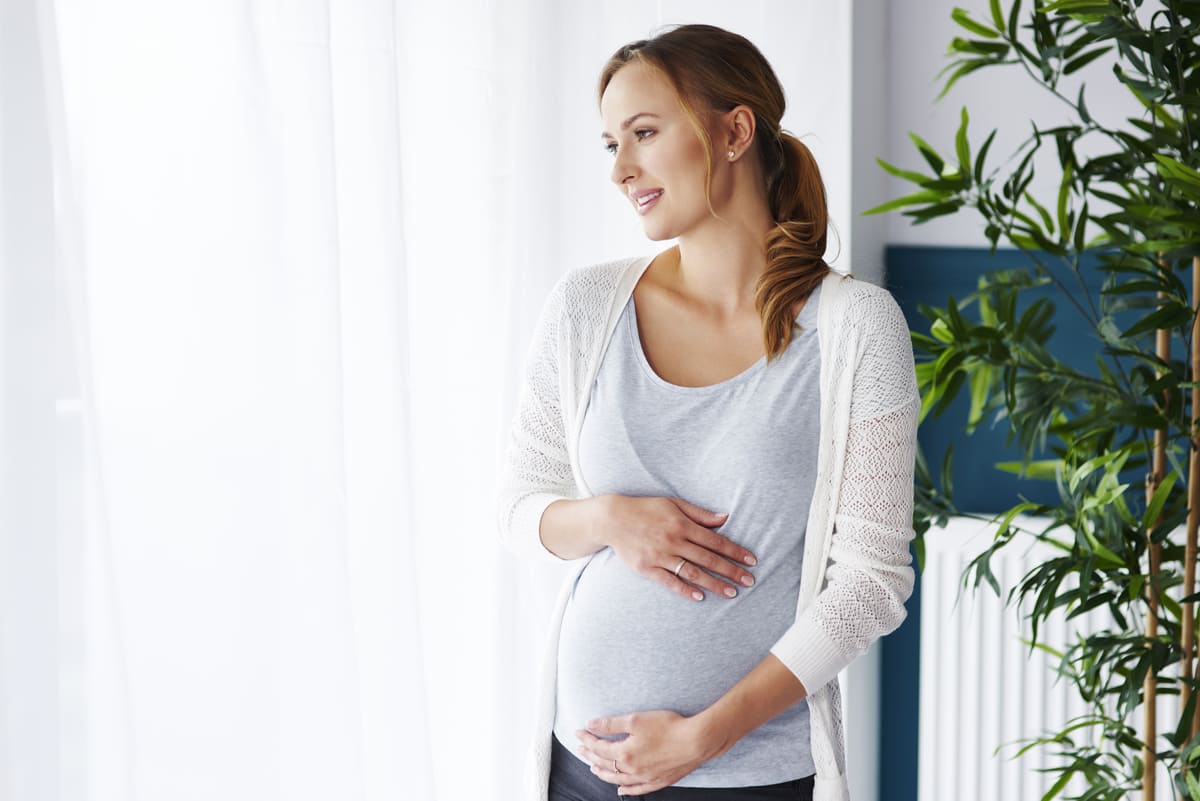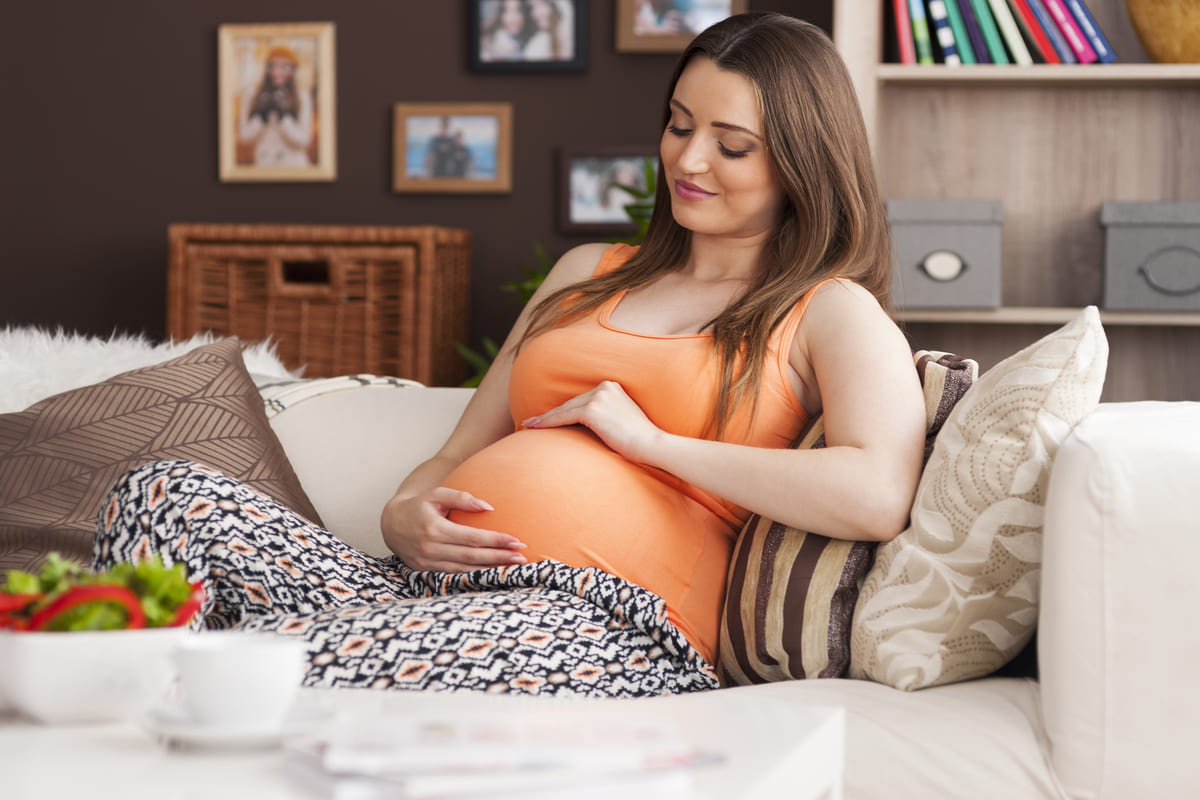
When it comes to pregnancy, every expecting mother wonders when the physical changes from carrying a baby will start to be noticeable. While some women may show signs early on in their pregnancy, for others, it can take months before there are significant changes in their appearance. Knowing what these changes might look like and when they typically occur can be helpful for mothers who are trying to get familiar with their changing bodies during this special time. In this blog post, we’ll provide an overview of when expecting mothers can expect to start seeing significant visible differences in terms of showing.
When do pregnant women start showing in pregnancy?
Pregnancy symptoms and physical changes can start to occur as early as two weeks after conception. However, most pregnant women don’t start showing until around 12-16 weeks. As your pregnancy progresses, the uterus expands gradually, making it more visible through the abdomen. Generally, pubic bone and muscular support determine how soon or visible your bump will be. Women who have been pregnant before tend to show sooner than first-time moms. Let’s delve into the timeline of bumps for new moms and those with experience in childbirth:
In the first pregnancy
First-time moms tend to start showing in the second trimester, between 12 and 16 weeks. Some women will show earlier than others due to their physique, muscle tone and the baby’s position. Moreover, in the first-time pregnancy, your abdominal muscles stretch out more quickly, so it’s common to start showing sooner. Once you enter the third trimester, your bump will become more prominent, and you’ll be able to feel the baby’s movements more clearly.
In the second pregnancy
Women who have had multiple pregnancies tend to show sooner, usually around 10-12 weeks. This is because your uterus and abdominal muscles don’t need to stretch as much due to less space between them. As with the first pregnancy, you’ll become more rounded in the abdomen area as the baby bump grows. Nevertheless, the pregnant belly of a second-time mother tends to be more pronounced than a first-time mom.
No matter your experience level, every woman’s body and pregnancy progress differently. Ultimately, when you start showing during pregnancy depends on several factors. It’s important to remember that everyone grows differently during pregnancy, and there is no one-size-fits-all timeline. Be sure to listen to your body and consult with your doctor if you have any questions or concerns.

When does pregnancy start to show with twins?
Developing pregnancy symptoms can vary greatly from woman to woman, but for most women carrying twins, physical signs of pregnancy may be more obvious and occur earlier than with a singleton pregnancy. For example, a telltale sign of twins is that moms-to-be often experience heightened morning sickness. Higher fatigue levels can also mark the first trimester of a twin pregnancy due to the increased demands on the woman’s body. Look at the below details to know more when your baby bump show early with twins:
In the first pregnancy
If you are carrying multiple babies, it is likely that your baby bump will begin to show before the completion of your first trimester. This is due to the fact that you will have a larger uterus than normal, and your body has to accommodate the extra space needed to carry two (or more) babies. Twins usually begin to show around 12-14 weeks; however, every mother and pregnancy are different, so it can be earlier or later than this timeframe.
In subsequent pregnancies
Carrying twins in a second pregnancy usually makes the baby bump show even earlier. This is because your uterus and stomach muscles have already been stretched in a previous pregnancy, so there is less space for the extra babies. Although we know not all small babies or early showings are due to twins, it is usually quite easy for the doctor to diagnose a twin pregnancy if you have a visible baby bump in your first trimester.
No matter how early your twin pregnancy begins to show, ensure, you get regular prenatal care for both babies so they can stay healthy and grow.
What factors affect baby bump progression?
Pregnancy bumps vary significantly depending on the mother-to-be’s physical characteristics, including:
Weight
Body weight can play a role in the size of your baby bump. Generally, if you’re overweight or obese before pregnancy, your baby bump might not be as prominent. On the other hand, if you are too thin, it could be more visible.
Position of the Baby
The position of your baby inside your uterus can also affect the size of your baby bump. If the baby is positioned so that it is up against your ribs, it could make your belly appear smaller. Conversely, if the baby is lower in the uterus and facing outwards, it can make your belly look bigger.
Diastasis recti
Diastasis recti (a separation of the abdominal muscles) can also make your baby bump look bigger than usual. With your first baby, the separation may be more prominent, and subsequent pregnancies tend to worsen. Generally, the pregnant uterus in the later stages of pregnancy exerts greater pressure on the abdominal muscles, thus causing further separation.
Age
Age is the common factor in baby bump progression. Generally, the younger you are when pregnant, the more quickly your baby bump may appear. On the other hand, if you’re older and have had previous pregnancies, your belly might not look as prominent.
The number of pregnancies
The more pregnancies you’ve had, your bump will look more obvious. As your skin stretches, it can take longer to return to its pre-pregnancy state. Although this is completely normal, some women find their baby bump looks larger than usual with each subsequent pregnancy.
Tips we should need to know
Here are some tips that can help you stay comfortable and healthy throughout your pregnancy:
- Make sure you are eating foods that are rich in nutrients to ensure the health and growth of your baby. Eating a balanced diet is essential for both you and your growing baby.
- Pregnancy can be exhausting, so make sure to get plenty of rest. Try to establish a regular sleep schedule and stick to it.
- Exercise can help reduce stress, improve circulation, and strengthen your muscles during pregnancy. Make sure to check with your doctor before starting any exercise routine.
- Proper hydration is important, so ensure you drink plenty of water throughout the day.
- Be aware of any warning signs that may indicate a problem with your pregnancy. If you experience any unusual pains or bleeding, contact your doctor immediately.
- Don’t forget to practice good self-care during your pregnancy. Take time to relax and do things that make you feel happy.
- Visit your doctor regularly throughout the pregnancy for check-ups and tests. Keeping up with your prenatal care is important for your and your baby’s well-being.
- Take time to connect with those around you, especially other pregnant women or mothers who have been through it before. Talking to someone with experience can be comforting and provide valuable insight.
- Be sure to follow the advice of your doctor, as well as any recommendations for additional screening tests or prenatal care.
- Finally, take time to enjoy your pregnancy! This is a unique and special experience you will never experience again. Celebrate all the changes that come with being pregnant and cherish every moment.
Following these tips can help you stay healthy throughout your pregnancy while providing support and comfort during this special time. Remember to always listen to your body and seek medical advice if necessary!
The Conclusion
Pregnancy is a beautiful process that starts from the moment of conception. Many women, they don’t even know they are pregnant until after the fourth week or so. By then, some symptoms will start to show up. These may include missed periods, nausea, increased urination, fatigue, and breast tenderness. For first-time mothers, the physical changes and signs of pregnancy may not become noticeable until the second trimester. If you think you may be pregnant, take a home pregnancy test or see your doctor for confirmation. We hope this blog post has provided you with some helpful insight into when baby bump changes may start to show up! Thanks for reading.